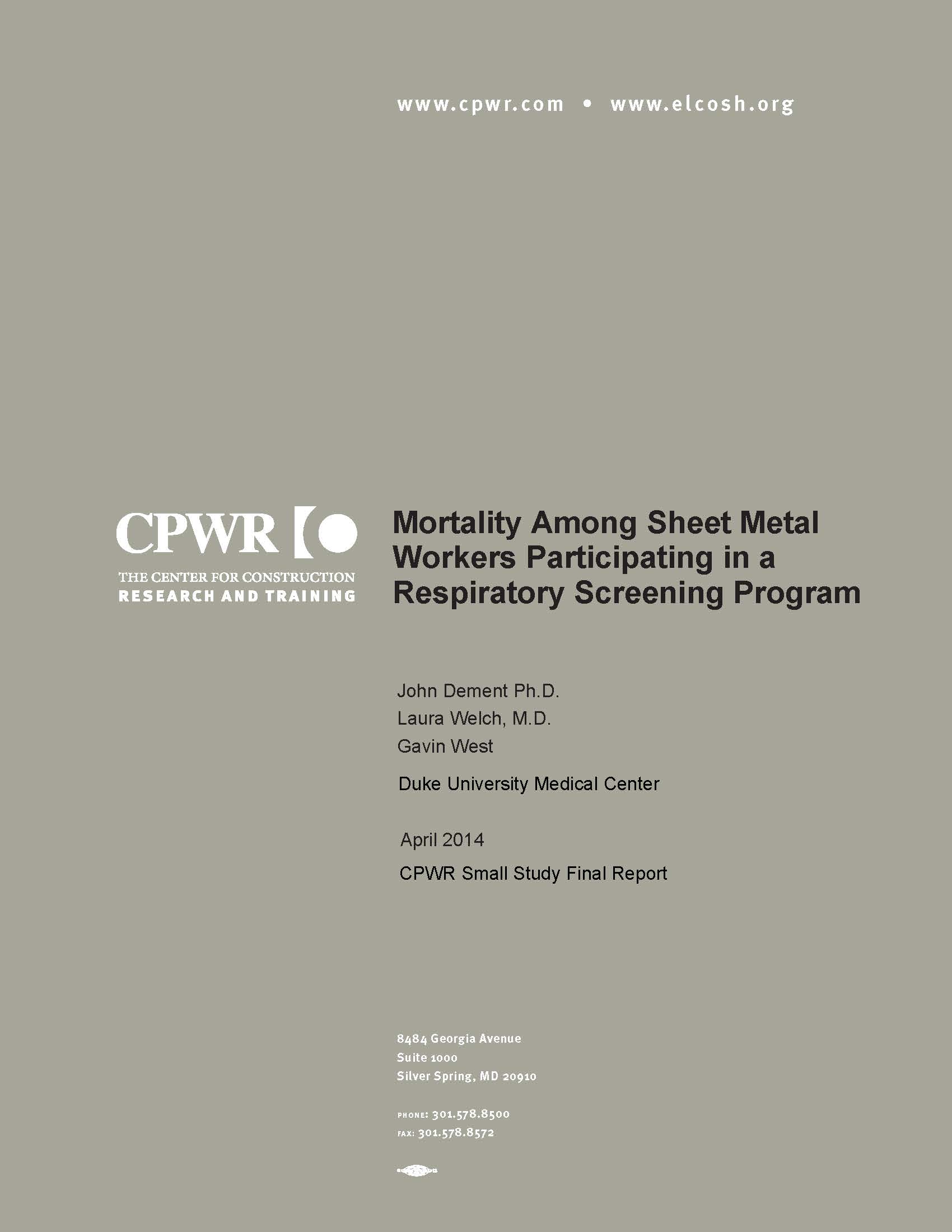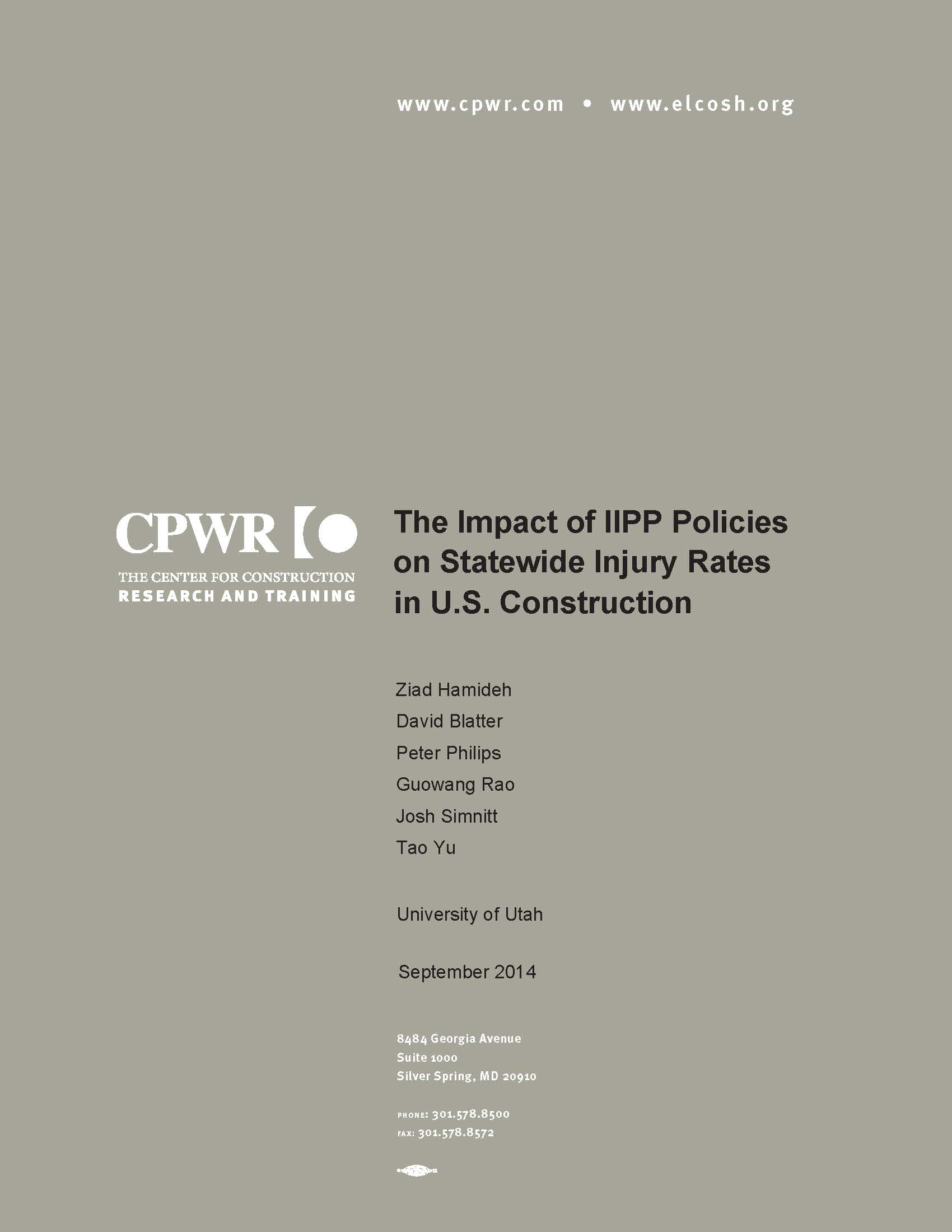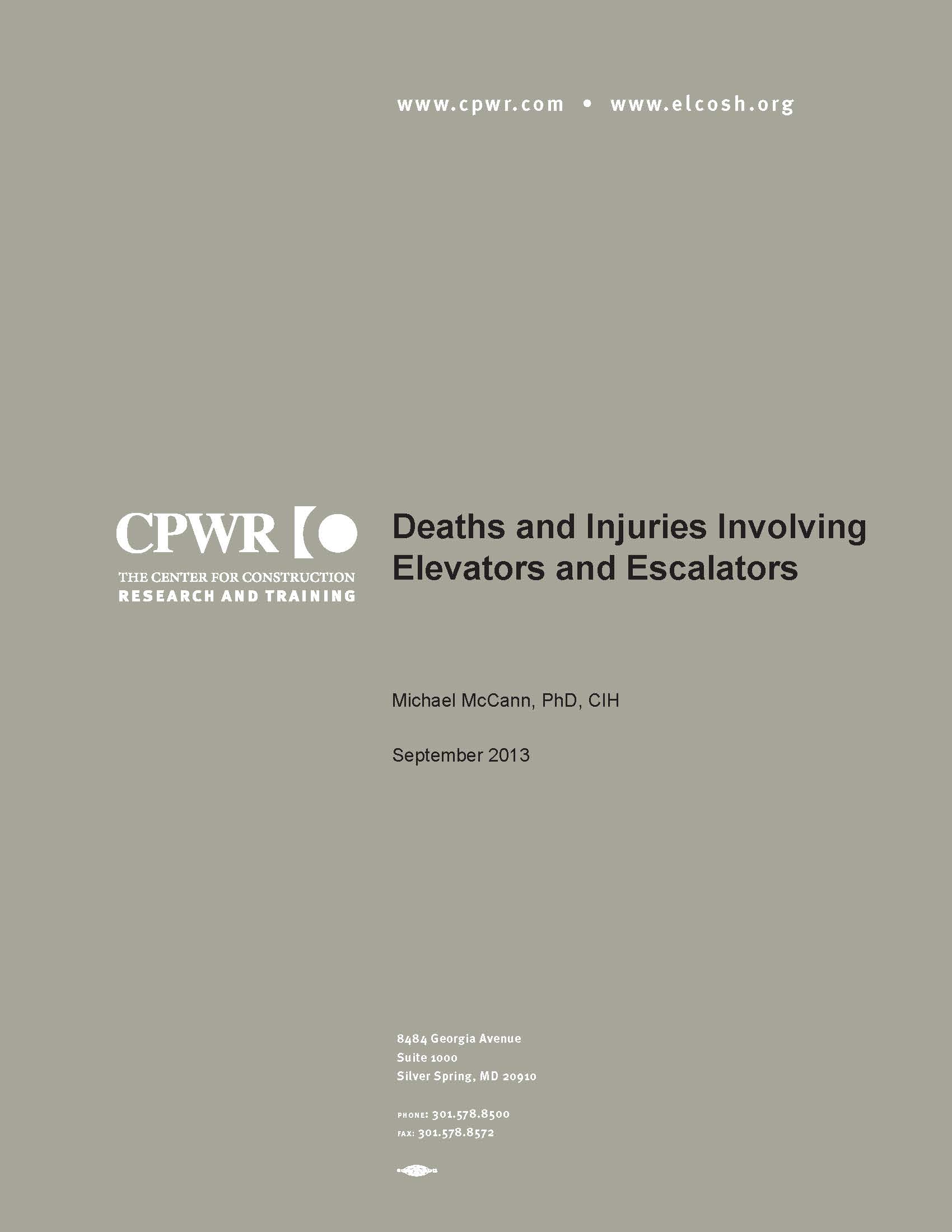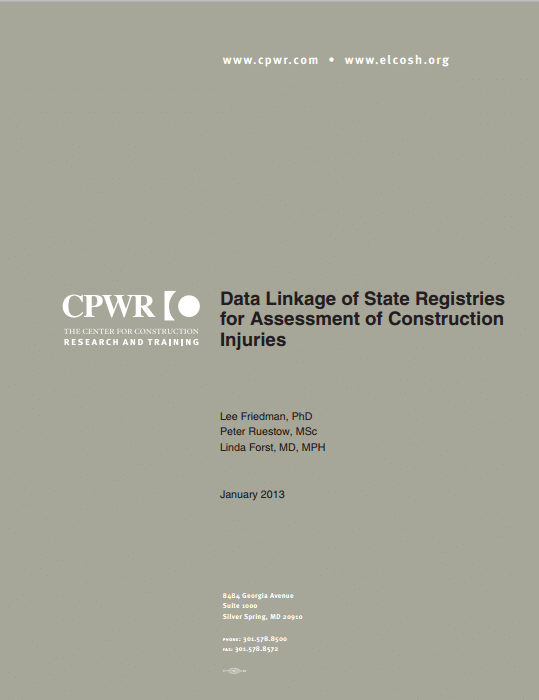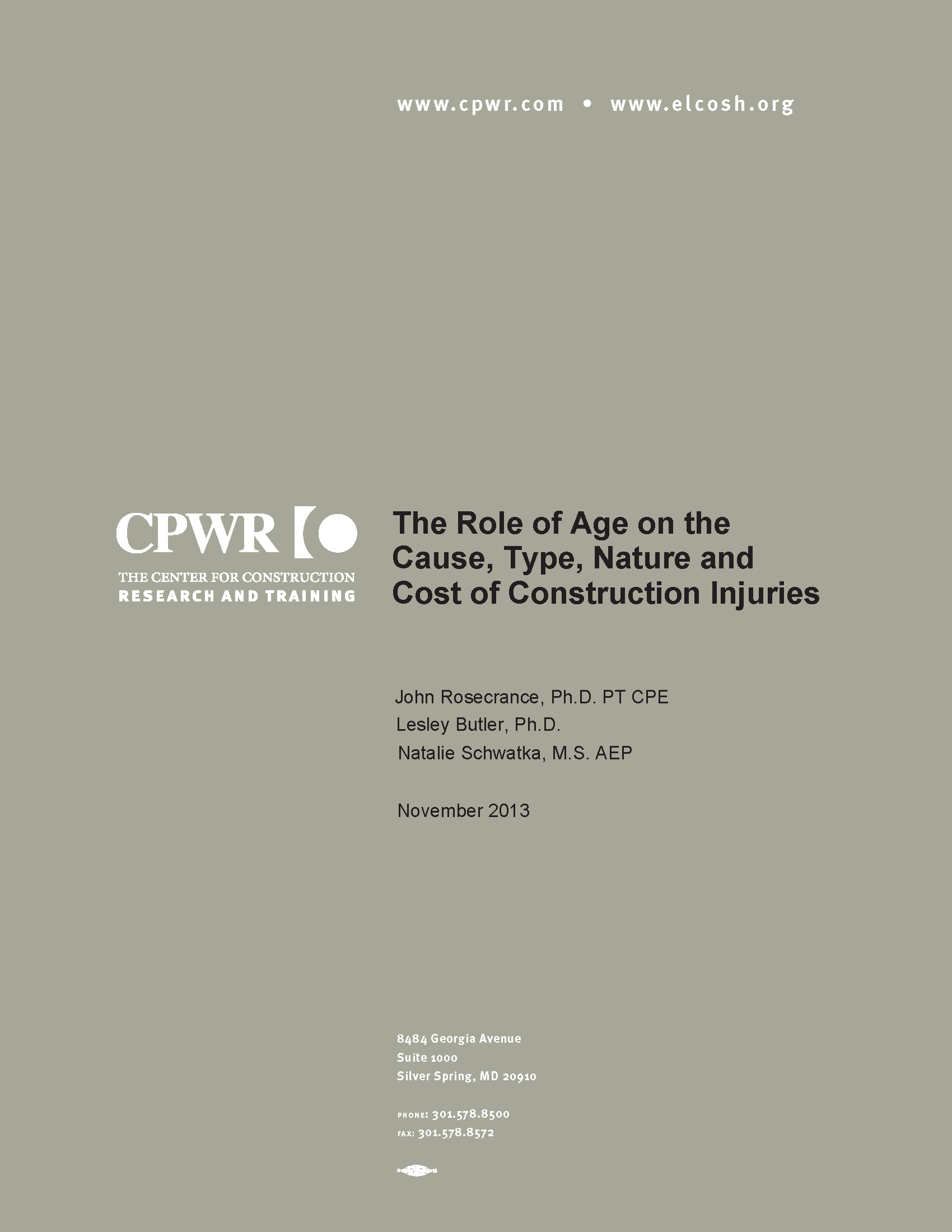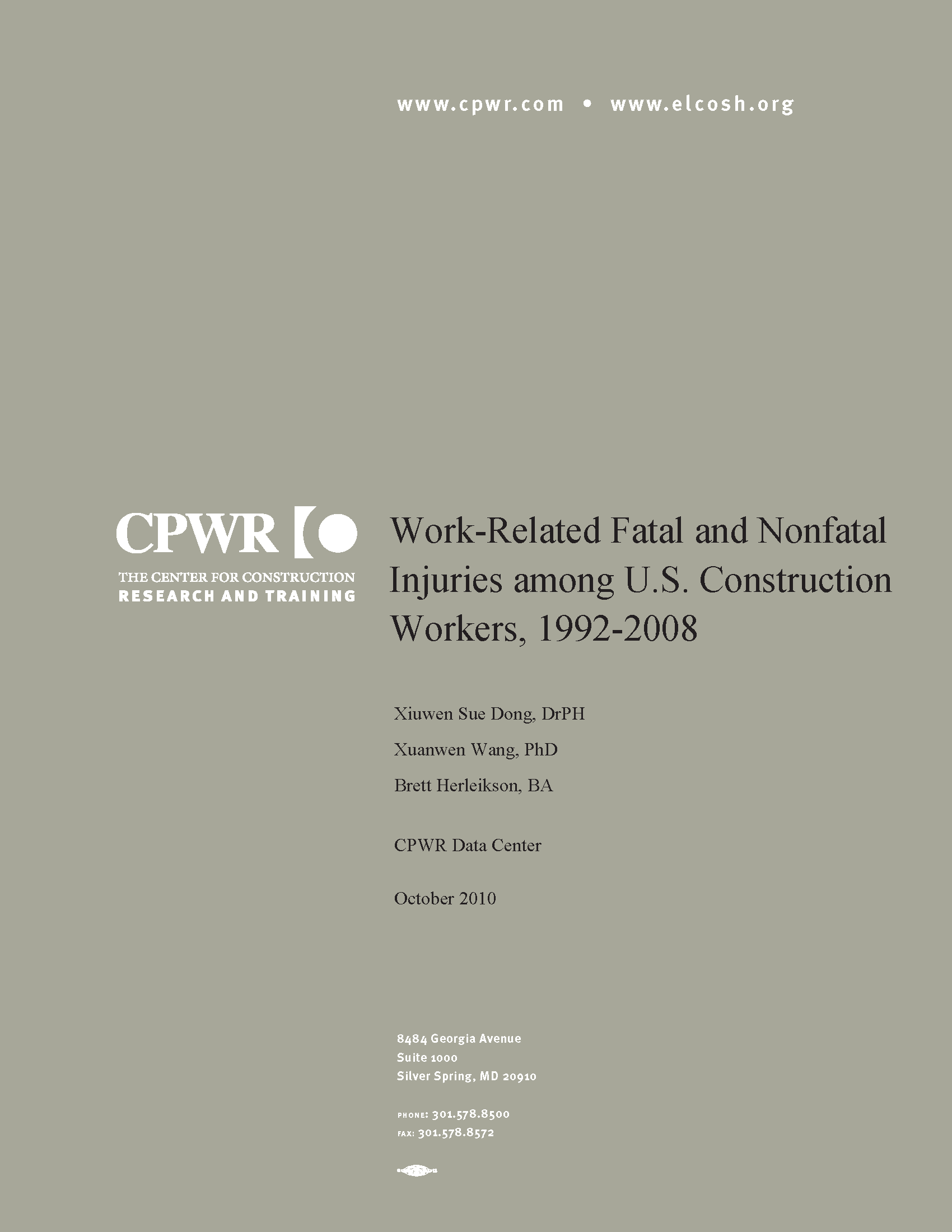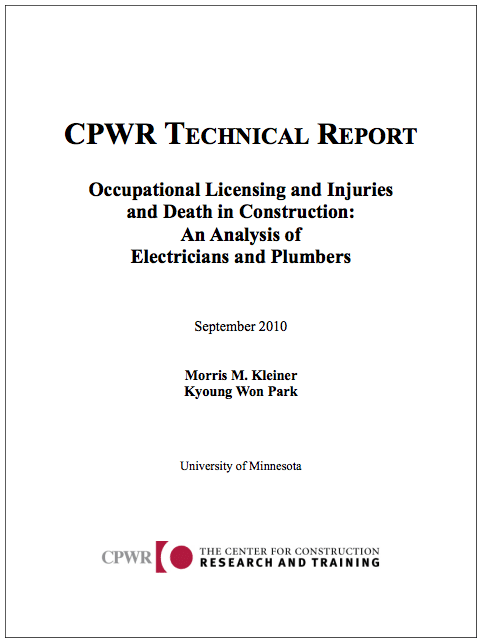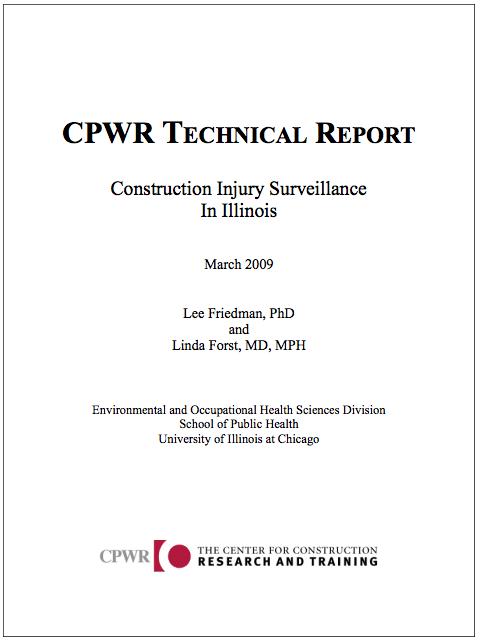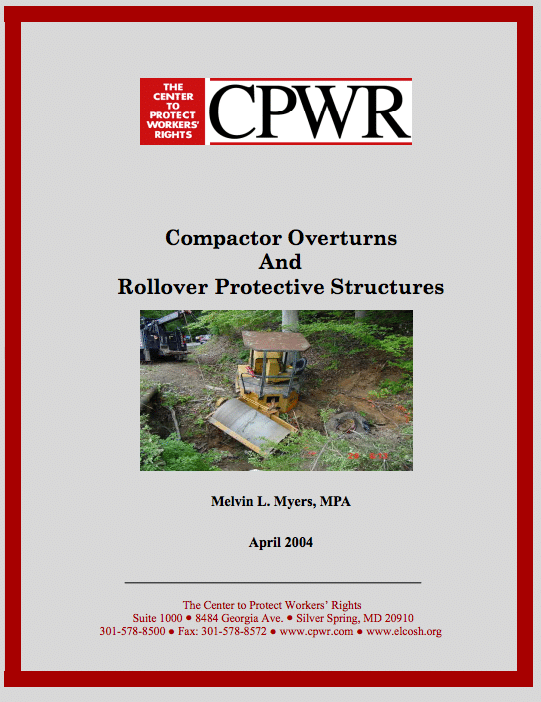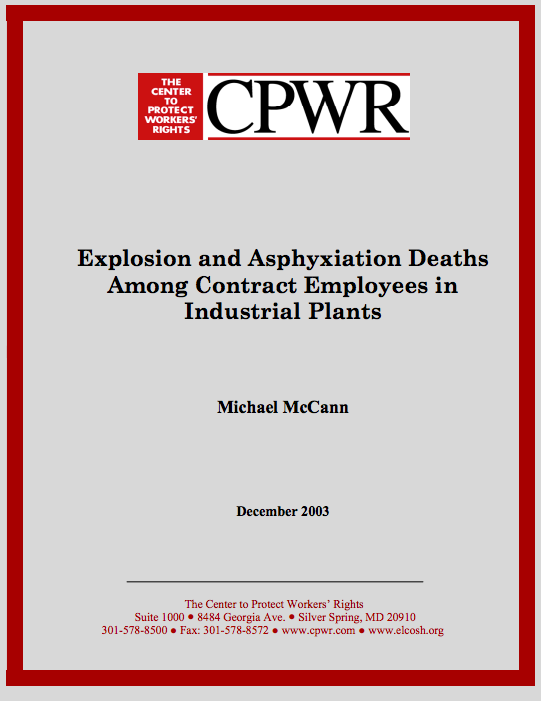Data Analysis of Construction Deaths and Injuries
Effectiveness of OSHA Outreach Training on Construction Work-Related Injury Rates
Schoenfisch, Ashley, Lipscomb, Hester, Sinyai, Clayton. August 2016.
Although safety training is one of the more frequently recommended interventions for work-related injury prevention, few studies have explored the impact of safety training on injury outcomes. The researchers examined a 9-year dynamic cohort of 17,106 union carpenters in Washington State, accounting for nearly 100 million work-hours. Using records of OSHA Outreach Training (“OSHA 10,” “OSHA 30,” “OSHA 500,” and “OSHA 502”) and workers’ compensation claims, the research team explored the relationship between OSHA Outreach Training and work-related injury rates.
Although safety training is one of the more frequently recommended interventions for work-related injury prevention, few studies have explored the impact of safety training on injury outcomes. The researchers examined a 9-year dynamic cohort of 17,106 union carpenters in Washington State, accounting for nearly 100 million work-hours. Using records of OSHA Outreach Training (“OSHA 10,” “OSHA 30,” “OSHA 500,” and “OSHA 502”) and workers’ compensation claims, the research team explored the relationship between OSHA Outreach Training and work-related injury rates.
Mortality Among Sheet Metal Workers Participating in a Respiratory Screening Program
Dement, John, Laura Welch, and Gavin West. April 2014.
Researchers followed a cohort of 17,345 individuals with 20 or more years in the trade, identifying the cause of death in order to examine overall patterns of mortality as well as mortality due to work-related lung diseases including asbestosis, asbestos-related cancers, and COPD (Chronic Obstructive Pulmonary Disease). Sheet metal workers in the sample proved to be at a significantly elevated risk of death from asbestosis, mesothelioma, and pleural cancer. Workers demonstrating asbestosis exhibited higher lung cancer rates, and evidence suggested that asbestos exposures may increase lung cancer risk even in the absence of asbestosis.
Researchers followed a cohort of 17,345 individuals with 20 or more years in the trade, identifying the cause of death in order to examine overall patterns of mortality as well as mortality due to work-related lung diseases including asbestosis, asbestos-related cancers, and COPD (Chronic Obstructive Pulmonary Disease). Sheet metal workers in the sample proved to be at a significantly elevated risk of death from asbestosis, mesothelioma, and pleural cancer. Workers demonstrating asbestosis exhibited higher lung cancer rates, and evidence suggested that asbestos exposures may increase lung cancer risk even in the absence of asbestosis.
The Impact of IIPP Policies on Statewide Injury Rates September 2014 in U.S. Construction
Hamideh, Ziad, David Blatter, Peter Philips, Guowang Rao, Josh Simnitt and Tao Yu. June 2014.
The Occupational Safety and Health Administration (OSHA) asserts that companies preparing Injury and Illness Prevention Programs (IIPPs) can dramatically reduce workplace injuries. A 2012 OSHA white paper estimated that employers adopting IIPPs experience a 15 to 35 percent drop in injuries, and that state policies mandating IIPPs would cut workplace injuries by 12 percent. Today dozens of U.S. states require companies to use IIPPs, offer discounted workers’ compensation premiums to companies with IIPPs, or both. Researchers compared 1982-2008 reported injury data for states with policies promoting IIPP adoption with those that did not, controlling for multiple potential confounders.
The Occupational Safety and Health Administration (OSHA) asserts that companies preparing Injury and Illness Prevention Programs (IIPPs) can dramatically reduce workplace injuries. A 2012 OSHA white paper estimated that employers adopting IIPPs experience a 15 to 35 percent drop in injuries, and that state policies mandating IIPPs would cut workplace injuries by 12 percent. Today dozens of U.S. states require companies to use IIPPs, offer discounted workers’ compensation premiums to companies with IIPPs, or both. Researchers compared 1982-2008 reported injury data for states with policies promoting IIPP adoption with those that did not, controlling for multiple potential confounders.
Deaths and Injuries involving Elevators or Escalators
Revised. Michael McCann. 2013.
Using data from the BLS’ Census of Fatal Occupational Injuries, the Consumer Product Safety Commission, NIOSH’s Fatality Assessment Control and Evaluation (FACE) program, and other sources, this report gives statistics on deaths and injuries from incidents involving elevators and escalators, including types of activities and cause of death to workers. After thoroughly investigating the hazards and problems through data, the report concludes with recommendations to improve worker and passenger safety and prevent senseless injuries and deaths from occurring.
Using data from the BLS’ Census of Fatal Occupational Injuries, the Consumer Product Safety Commission, NIOSH’s Fatality Assessment Control and Evaluation (FACE) program, and other sources, this report gives statistics on deaths and injuries from incidents involving elevators and escalators, including types of activities and cause of death to workers. After thoroughly investigating the hazards and problems through data, the report concludes with recommendations to improve worker and passenger safety and prevent senseless injuries and deaths from occurring.
Data Linkage of State Registries for Assessment of Construction Injuries
Friedman, Lee, Peter Ruestow, and Linda Forst. January 2013
Researchers created a method to link public health and employer-based databases with a database of workers’ compensation claims to give a more complete picture of work-related injuries in construction. A key finding: White, non-Hispanic construction workers were consistently awarded higher monetary settlements than black and white Hispanic construction workers for specific injuries, despite the fact that the while, non-Hispanic workers’ injuries and resulting disabilities were equivalent or lower than Hispanic workers.
Researchers created a method to link public health and employer-based databases with a database of workers’ compensation claims to give a more complete picture of work-related injuries in construction. A key finding: White, non-Hispanic construction workers were consistently awarded higher monetary settlements than black and white Hispanic construction workers for specific injuries, despite the fact that the while, non-Hispanic workers’ injuries and resulting disabilities were equivalent or lower than Hispanic workers.
The Role of Age on the Cause, Type, Nature and Cost of Construction Injuries
John Rosecrance, PhD PT CPE, Lesley Butler, PhD, Natalie Schwatka, MS AEP. November 2012.
Work-Related Fatal and Nonfatal Injuries among U.S. Construction Workers, 1992-2008
Dong, Xiuwen, Xuanwen Wang, and Brett Herleikson. 2010.
An update of an earlier CPWR report by Xiuwen Sue Dong, Yurong Men, Elizabeth Haile (2005), this report analyzes trends in rates of deaths (from injuries) and of injuries and illnesses over 16 years. Shows trends for bricklayers, carpenters, construction laborers, electrical power installers, electricians, excavating/loading machine operators, grader/dozer/scraper operators, ironworkers, operating engineers, painters, plumbers, roofers, truck drivers, and welders/cutters.
Injury Trend 1992-2008 in construction with new 7a CHARTS.ppt
An update of an earlier CPWR report by Xiuwen Sue Dong, Yurong Men, Elizabeth Haile (2005), this report analyzes trends in rates of deaths (from injuries) and of injuries and illnesses over 16 years. Shows trends for bricklayers, carpenters, construction laborers, electrical power installers, electricians, excavating/loading machine operators, grader/dozer/scraper operators, ironworkers, operating engineers, painters, plumbers, roofers, truck drivers, and welders/cutters.
Injury Trend 1992-2008 in construction with new 7a CHARTS.ppt
Occupational Licensing and Injuries and Death in Construction: An Analysis of Electricians and Plumbers
Kleiner, Morris and Kyoung Won Park. 2010
Crane-Related Deaths in Construction and Recommendations for Their Prevention
McCann, Michael, Janie Gittleman and Mary Watters. Revised 2009.
Revised and updated with an expanded analysis; inclusion of secondary Source coding and keyword search increases crane deaths. An in-depth report on U.S. crane fatalities, with examples of incidents that resulted in bystander fatality or injury gathered from news reports. Using BLS construction worker fatality data from 1992-2006, the report gives eight recommendations to prevent fatalities and illnesses from occurring.
Revised and updated with an expanded analysis; inclusion of secondary Source coding and keyword search increases crane deaths. An in-depth report on U.S. crane fatalities, with examples of incidents that resulted in bystander fatality or injury gathered from news reports. Using BLS construction worker fatality data from 1992-2006, the report gives eight recommendations to prevent fatalities and illnesses from occurring.
Construction Injury Surveillance in Illinois
Friedman, Lee and Linda Forst, MD, MPH. March 2009
Compactor Overturns and Rollover Protective Structures
Myers, Melvin L. 2004
Analyzes 58 OSHA reports of overturn-related deaths of operators of compactors (steamrollers) in 1986-2002 to learn whether a lack of rollover protective structures (ROPSs) – and failure to use seatbelts – contributed to the deaths. Recommendations include promulgation of an OSHA standard for compactors requiring the use of ROPSs and seatbelts in construction, operator-training requirements, design changes, and further safety research.
Analyzes 58 OSHA reports of overturn-related deaths of operators of compactors (steamrollers) in 1986-2002 to learn whether a lack of rollover protective structures (ROPSs) – and failure to use seatbelts – contributed to the deaths. Recommendations include promulgation of an OSHA standard for compactors requiring the use of ROPSs and seatbelts in construction, operator-training requirements, design changes, and further safety research.
Explosion and Asphyxiation Deaths among Contract Employees in Industrial Plants
McCann, Michael. 2003
This summary, prepared for the U.S. Chemical Safety and Hazard Investigation Board, finds that 91 contract employees on construction projects at industrial plans in 1992-2001 were killed by explosions or asphyxiation and recommends changes, including new training and procedures, particularly for welding.
This summary, prepared for the U.S. Chemical Safety and Hazard Investigation Board, finds that 91 contract employees on construction projects at industrial plans in 1992-2001 were killed by explosions or asphyxiation and recommends changes, including new training and procedures, particularly for welding.
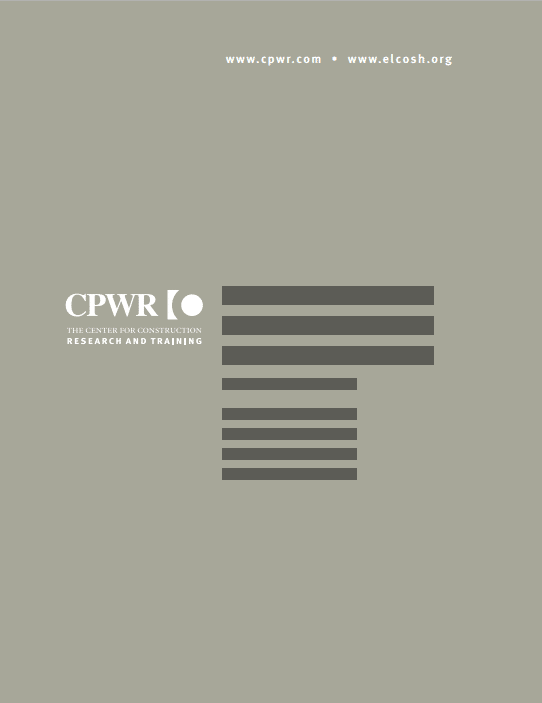
Occupational Blood Lead Surveillance of Construction Workers, II: Health Programs in Thirteen States.
Goldberg, Mark, Cora Roelofs, Jean Weiner, and Deborah Nagin. 1997
Continuation of 1995 report recommends increased funding for occupational lead surveillance, programs targeted to construction, uniform data collection, and interagency cooperation; focuses on Alabama, Alaska, Florida, Idaho, Indiana, Kentucky, Mississippi, North Carolina, Oregon, Pennsylvania, South Carolina, Tennessee, and West Virginia.
Continuation of 1995 report recommends increased funding for occupational lead surveillance, programs targeted to construction, uniform data collection, and interagency cooperation; focuses on Alabama, Alaska, Florida, Idaho, Indiana, Kentucky, Mississippi, North Carolina, Oregon, Pennsylvania, South Carolina, Tennessee, and West Virginia.

A Performance Goal for Construction Safety and Health
Ringen, Knut. 1995
Proposes a numerical goal for reduced rates of lost-time injuries and deaths from work-related injuries for the construction industry in the United States.
Proposes a numerical goal for reduced rates of lost-time injuries and deaths from work-related injuries for the construction industry in the United States.

Occupational Blood Lead Surveillance of Construction Workers: Health Programs in Twelve States
Goldberg, Mark, Cora Roelofs, Jean Weiner, and Deborah Nagin. 1995
Finds uneven efforts to address construction worker lead exposures, with programs involving interagency cooperation the most successful; suggests steps to improve surveillance and intervention. Focuses on California, Connecticut, Georgia, Louisiana, Maryland, Massachusetts, Michigan, New Jersey, New York, Ohio, Texas, and Washington.
Finds uneven efforts to address construction worker lead exposures, with programs involving interagency cooperation the most successful; suggests steps to improve surveillance and intervention. Focuses on California, Connecticut, Georgia, Louisiana, Maryland, Massachusetts, Michigan, New Jersey, New York, Ohio, Texas, and Washington.
